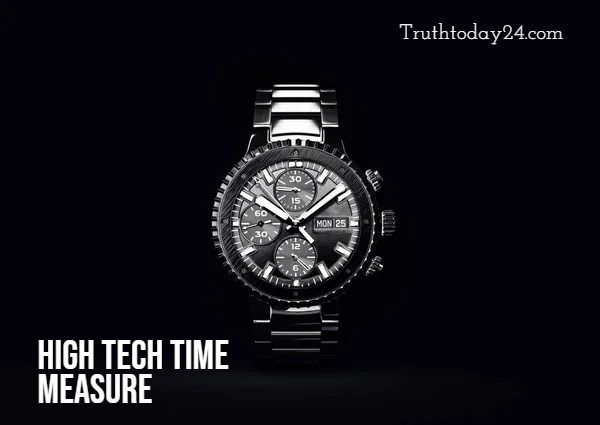Since ancient times, high tech time measure time has been a vital component of human society. Accurate timekeeping has proven essential for many facets of human endeavor, from monitoring the motion of celestial bodies to coordinating international communication networks. Timekeeping techniques have changed dramatically over the ages, moving from basic sundials to complex atomic clocks. In this piece, we examine the developments, difficulties, and ramifications of this exciting voyage into high-tech time measurement.
Ancient Timekeeping Methods:
Sundials: Sundials were among the first timepieces to use the sun’s shadow to tell the time. They were widely used to estimate the time roughly during the day in ancient civilizations like Egypt, Greece, and Rome.
Water Clocks: Developed by societies such as the Chinese and Ancient Egyptians, water clocks used controlled water flow to measure time. More accurate timekeeping was made possible by these gadgets, particularly at night when sundials were useless.
Mechanical Clocks and Precision Timekeeping:
Mechanical Clocks: Timekeeping underwent a radical change when mechanical clocks were developed in the Middle Ages. Mechanical clocks, which were first powered by weights and controlled by escapements, allowed for more precise timekeeping and were essential to many societal activities, including science, business, and religion.
Pendulum Clocks: Developed by Dutch scientist Christiaan Huygens in the 17th century, the pendulum clock greatly improved the accuracy of timekeeping. Standardized timekeeping across regions was made possible by the regular oscillation of the pendulum, which made it possible to regulate the clock’s operation more precisely.
The Advent of High-Tech Timepieces:
Quartz Crystal Clocks: The invention of quartz crystal clocks in the 20th century marked a significant advancement in timekeeping technology. Through the use of quartz crystals’ piezoelectric qualities, these clocks outperformed mechanical counterparts in terms of accuracy and stability.
Atomic Clocks: The ultimate in high tech time measure, atomic clocks are based on the ideas of quantum mechanics. These clocks use the extremely accurate vibrations of atoms, usually rubidium or cesium, to create the standard unit of time, the second.
Modern Applications and Challenges:
Global Positioning System (GPS): Precise satellite navigation and synchronization are made possible by the GPS’s essential atomic clock components. Precise high tech time measure is necessary to pinpoint GPS receiver locations, opening up a variety of uses for them, from communications to navigation.
Time Dilation and Relativity: Einstein’s theory of relativity has significant effects on how time is measured, particularly when it comes to fast motion and gravitational fields. high tech time measure dilation effects occur in atomic clocks on satellites, requiring corrections to keep them in sync with surface clocks.
Future Perspectives and Innovations:
Optical Clocks: New technologies have the potential to improve high tech time measure accuracy even more. One example of them is the optical clock. Optical clocks have the ability to redefine time itself and advance scientific understanding by using the oscillations of light waves.
Quantum Clocks: The next stage of incredibly accurate timekeeping is represented by quantum clocks, which take advantage of quantum phenomena like superposition and entanglement. These clocks, which have applications in fundamental physics, metrology, and navigation, take use of the fragile quantum states of particles to achieve previously unheard-of levels of accuracy.
In summary:
From antiquated sundials to state-of-the-art atomic and quantum clocks, the development of sophisticated high tech time measure technology reflects humanity’s unwavering search for accuracy and comprehension. Our capacity to measure time with previously unheard-of accuracy is growing along with technology, altering markets, facilitating scientific breakthroughs, and influencing how we view the cosmos. The quest for flawless timekeeping continues to be a timeless undertaking in this ever-changing journey, inspiring innovation and stretching the bounds of what is conceivable. The pursuit of perfect timekeeping remains a high tech time measure endeavor, driving innovation and pushing the boundaries of what is possible.

